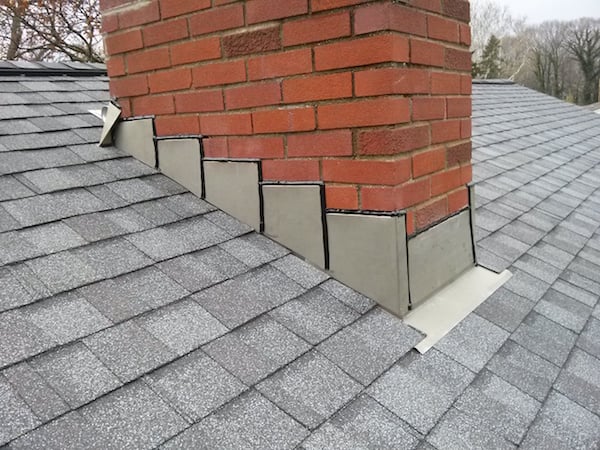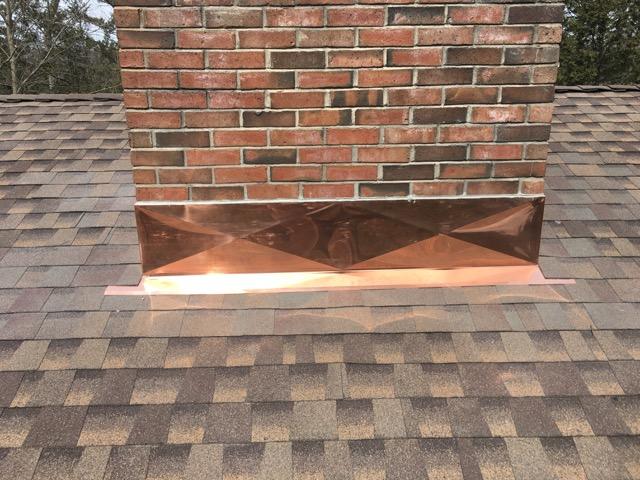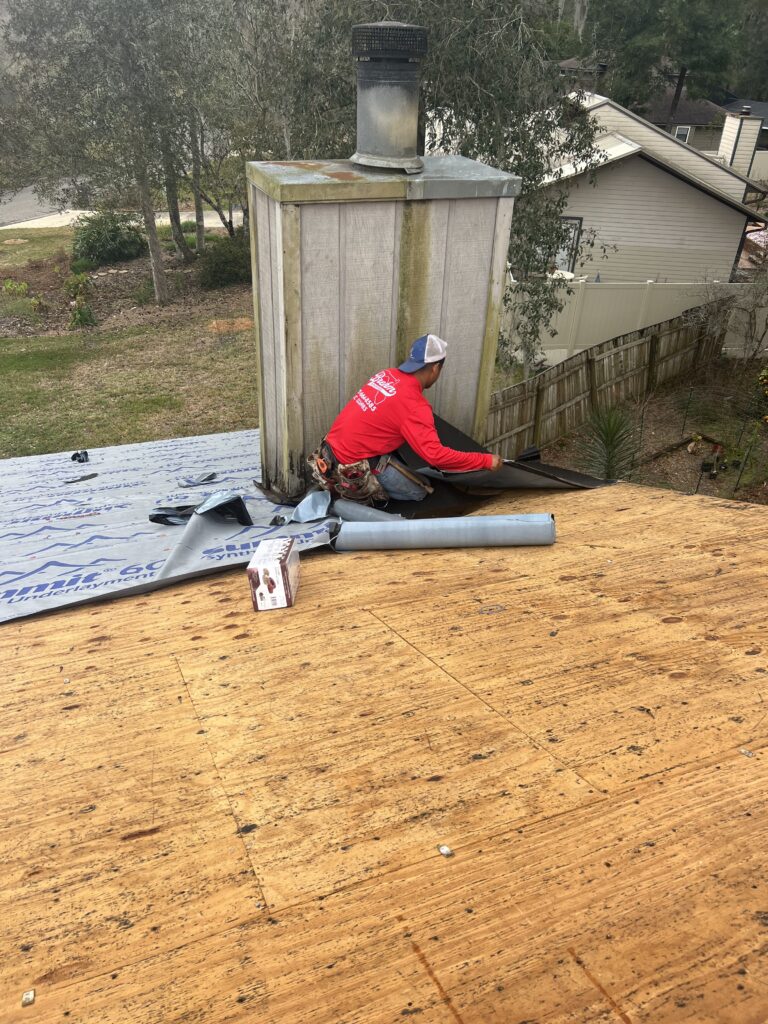Chimney Flashing: Ensuring Waterproof Integrity for Your Home

Welcome to the extensive guide on ensuring the waterproof integrity around your home’s chimney. As a seasoned roofing contractor, I am here to share with you the intricacies of chimney flashing—a critical component in safeguarding your home from water damage.
Unveiling the Importance of Chimney Flashing
Chimney flashing plays a huge role in waterproofing your roof. This vital construction detail serves as the junction between your chimney and roof, a potential entry point for water. Proper installation and maintenance of chimney flashing are paramount to preventing leaks and water damage inside your home.
The Anatomy of Effective Chimney Flashing
The process of installing effective chimney flashing involves several steps and components, each crucial to the overall waterproofing system. A thorough approach includes using a peel and stick membrane around the chimney, which provides an additional layer of water-resistant protection. Whenever possible, the goal is to remove any existing 4×5 metal flashing; however, this isn’t always feasible due to original siding or other structural elements that may hinder access.
In the case of brick chimneys, we pay close attention to the condition of the old counter flashing. If needed, it is carefully replaced, as this is a vital aspect of ensuring the longevity of the flashing system. It’s worth noting that chimney flashing is not just a roofing task but also requires skilled masonry work for proper installation.
The Non-negotiable: Crickets as per Florida Building Codes
Adhering to the Florida Building Codes, we ensure that a cricket, also known as a saddle, is installed on the ridge side of any chimney wider than 30 inches. This feature is not just a mere recommendation; it’s a requirement, designed to divert water and prevent pooling behind the chimney—a common source of leaks and water damage.
Delving into the Details: A Closer Look at Chimney Flashing Techniques
Diving deeper into the technicalities of chimney flashing, let’s explore the different methods and best practices that set the standard for high-quality roofing work. As stated in ‘Siding, Roofing, and Trim’ by Dyami Plotke:
“Copper flashing is worth the money. We almost always replace aluminum flashing with copper. Of course, copper costs more than aluminum, but it’s the superior material for several reasons. For starters, it looks good, it lasts almost forever, and it solders great. More important, though, it’s more malleable than aluminum. The flashing pieces can be formed by eye at the metal brake and can be adjusted easily by hand on the roof” (Plotke, ‘Siding, Roofing, and Trim’).
This excerpt underscores the importance of material choice in flashing and counterflashing. The malleability of copper allows for precision and adaptability on-site, ensuring a snug fit and enduring protection.

The Installation Process: Ensuring a Water-Tight Seal
The installation process of chimney flashing involves careful planning and execution. From applying the peel and stick membrane to fitting and securing the flashing and counterflashing, each step is meticulously carried out to ensure a water-tight seal.
It’s essential to understand that waterproofing around a chimney isn’t a one-size-fits-all scenario. Each home presents unique challenges that require a tailored approach, taking into consideration the existing structure and materials.
Staying Compliant: Building Codes and Best Practices
In Gainesville, Florida, where weather conditions can vary significantly, complying with the Florida Building Codes isn’t just about following rules—it’s about ensuring the safety and durability of your home. These codes are in place to protect your property against the unique climatic challenges we face.
The Value of Expertise: Why Choose a Skilled Roofing Contractor
When it comes to reroof, roof replacement, or roof installation, the value of choosing a skilled roofing contractor cannot be overstated. It’s not just about installing new shingles; it’s about understanding the complexities of roof systems, the critical nature of waterproofing, and the importance of precision in every step of the process.
A roofing company that specializes in chimney flashing will have the expertise to assess the condition of your roof and chimney, recommend the best course of action, and execute the job with precision.

Conclusion: Ensuring the Integrity of Your Home
In conclusion, waterproofing around your chimney is a critical aspect of maintaining the integrity of your home. From selecting the right materials to understanding the nuances of installation and adhering to building codes, every step is vital in protecting your property from water damage.
At Brehm Roofing, we pride ourselves on our commitment to excellence in every roofing project we undertake. Whether it’s a simple roof installation or a complex roof replacement involving intricate chimney flashing work, our dedicated team ensures that every aspect of the job is handled with utmost care and professionalism.
